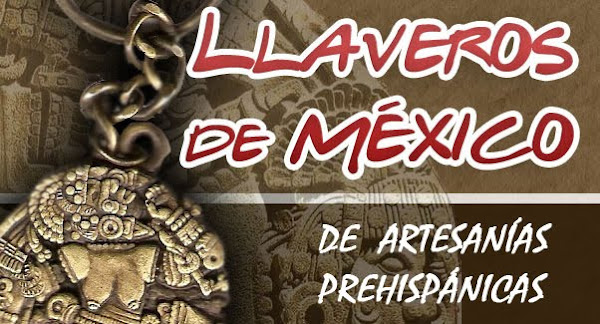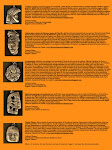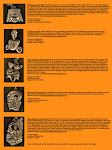
.jpg)
Carita Sonriente de El Tajín. Uno de los más notables objetos de la cultura de Veracruz, las caritas sonrientes constituyen un género de la alfarería prehispánica de Mesoamérica característica a esta cultura. Comúnmente se consideran totonacas, aunque estrictamente son de un periodo muy anterior al totonaca. Se trata de pequeñas piezas de barro cocido que representan rostros humanos sonriendo. En el universo de las representaciones antropomorfas mesoamericanas son excepcionales, puesto que el arte mesoamericano se caracteriza por sus retratos hieráticos y por el esquematismo de las representaciones humanas. En estricto sentido, no se trata de representaciones faciales; constituían parte de efigies de cuerpo completo, que se desprendieron con el paso del tiempo. Existen piezas completas con rostros sonrientes, todas procedentes del centro de Veracruz.
Cultura: De Veracruz
Procedencia: El Tajín
Región: Centro-Norte de Veracruz.
Más…Se desconoce cuál era la función de estas figuras de cerámica, que se han encontrado en sitios como Remojadas, Cerro de las Mesas, Nopiloa, El Tajín y Xiutetelco, sitios en los que la cultura clásica del Centro de Veracruz tuvo su mayor florecimiento. Se ha propuesto que las piezas son representaciones de sujetos en trance por el uso de alcaloides en rituales religiosos. También se ha dado como hipótesis que podrían ser representaciones de personajes importantes provenientes de diversas regiones de Mesoamérica, los cuales se identifican por el tipo de tocado que portan. También se piensa que se consideraban dotadas de poderes mágicos para cantar y bailar para los fallecidos en la otra vida, por lo que eran colocadas como ofrendas en las tumbas.
Smiling head of El Tajín. Besides being one of the most notable objects of the culture of Veracruz, the smiling heads are a gender of the Mesoamerican pre Hispanic pottery characteristic to this culture. They are commonly considered Totonacan, although strictly they are from a much previous period. They are little pieces of fired clay which represent smiling human faces. In the universe of the Mesoamerican anthropomorphic representations they are exceptional, because Mesoamerican art characterizes by its hieratic portraits and by the schematism of human representations. In strict sense, they are not facial representations; they constituted part of complete body effigies, which broke apart with time; there are complete pieces, all from the center-north of Veracruz.
Culture: of Veracruz
Location: El Tajín
Region: Center-North of Veracruz
More…It is unknown which was the function of these clay figurines, found in places like Remojadas, Cerro de las Mesas, Nopiloa, El Tajín and Xiutetelco, sites where the classic culture of central Veracruz had its greatest flourishing. It has been proposed that the pieces are representations of subjects in trance by the use of alkaloids in religious rituals. It has also been given as hypothesis that they could be representations of important persons that came from various regions of Mesoamerica, who are identified by the type of head dress they wear. Also it is thought that they were considered to be bestowed with magical powers to sing and dance in the afterlife, for the ones that passed away, for which they were placed as offerings in the graves.



